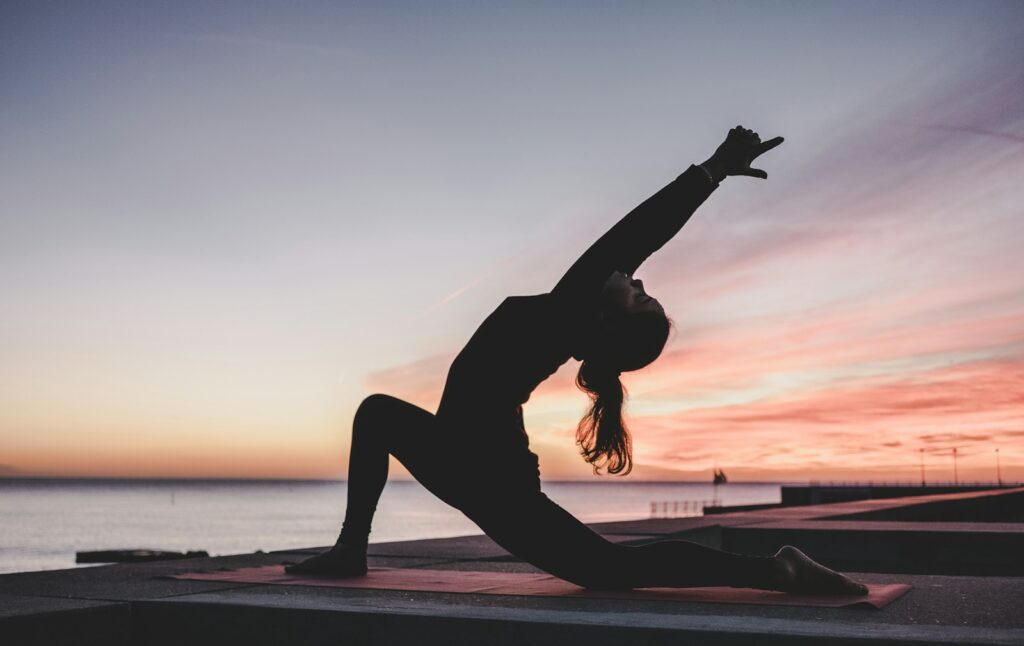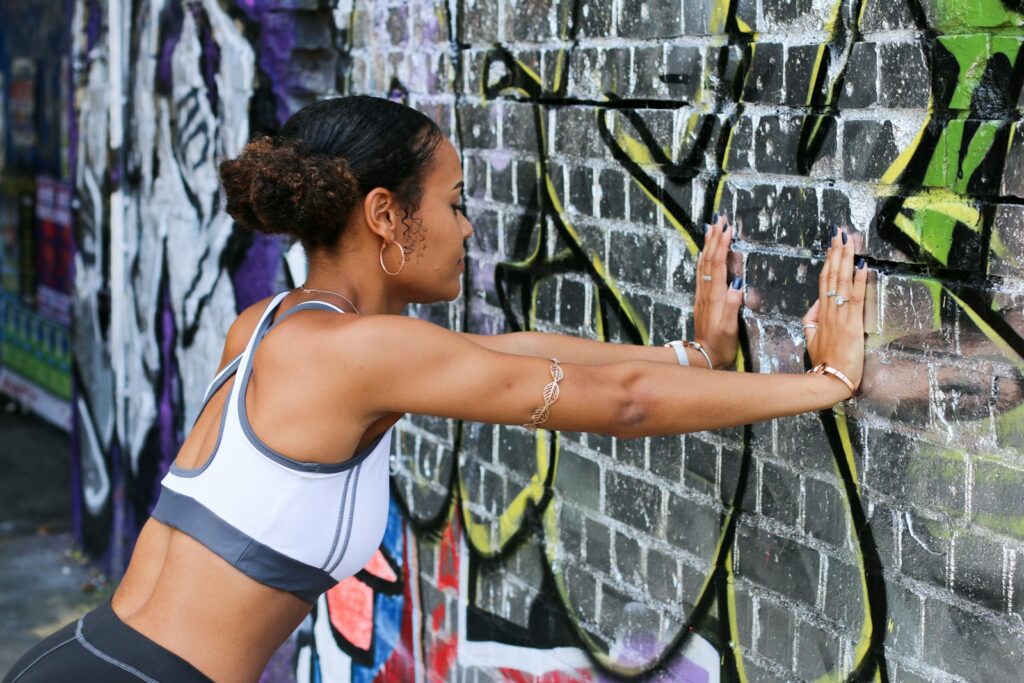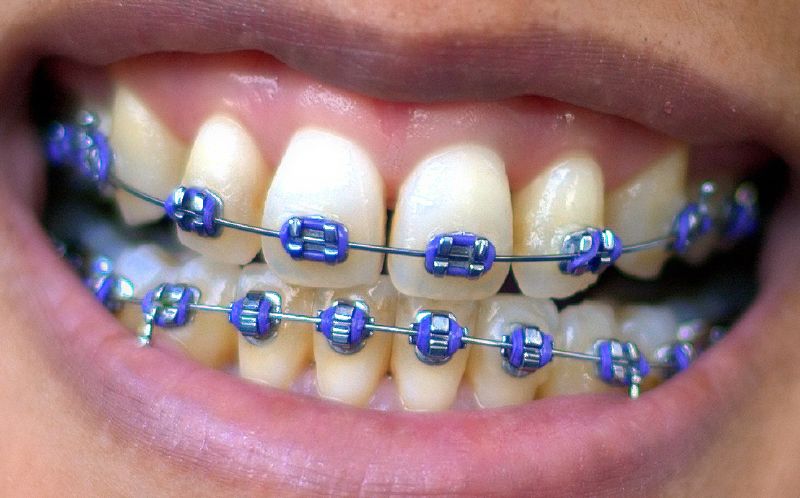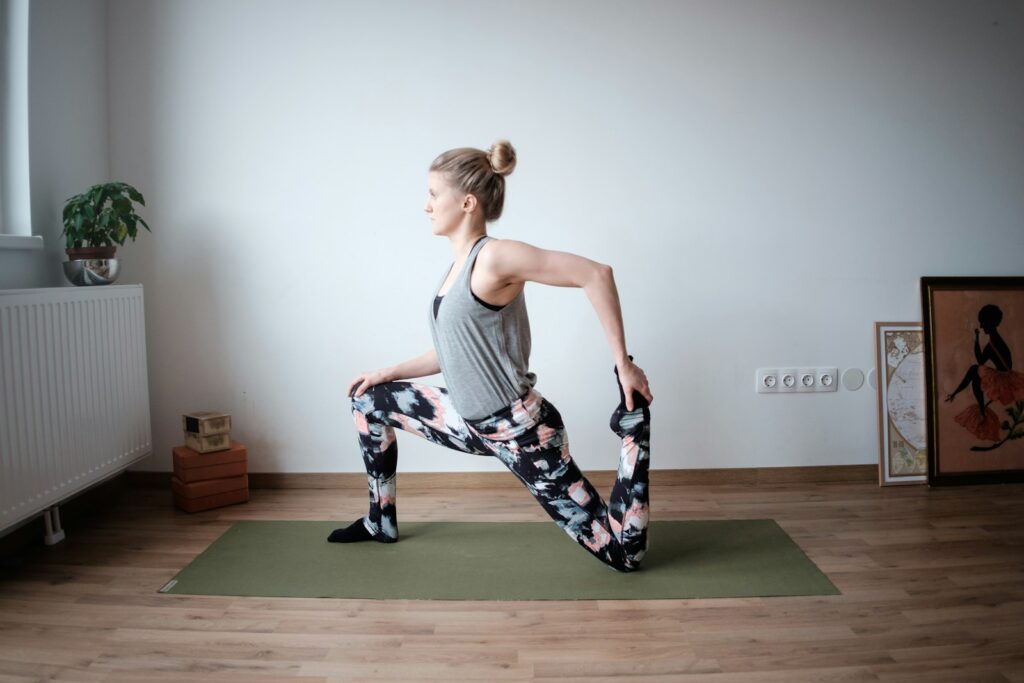
Waking up often brings with it an unwelcome guest: stiffness. That lingering tightness in your muscles and joints, a dull ache that makes the first movements of the day feel like a monumental effort, is a common experience for many. Whether it’s a stiff neck from an awkward sleep position or a groggy feeling in your entire body, the transition from slumber to alertness can sometimes feel far from refreshing. But what if there was a simple, effective way to gently coax your body and mind into a more vibrant state each morning?
Fitness experts widely agree that incorporating a stretching routine into your morning can profoundly change the way you start your day. As Beachbody Super Trainer and bestselling author Autumn Calabrese explains, “Whenever you’re inactive for long periods of time — sitting at a desk, stuck in traffic, binging your favorite show, asleep in bed — your muscles and connective tissues can become tight and your joints can become lubricated less effectively.” She points out that while lying in the same position for hours can contribute to stiffness, the real culprit is often a general lack of movement throughout the day, making morning stretches an essential kick-start.
Indeed, the payoffs are immense. Brittany Watts, a NASM-certified personal trainer and head coach at Tone House, emphasizes that “Stretching in the morning offers several benefits that can positively impact your day.” This isn’t just about feeling a bit looser; it’s about a holistic enhancement of your physical and mental state. From increasing your flexibility and boosting circulation to reducing stress and sharpening your focus, these simple, accessible movements can be a powerful tool in transforming your mornings and setting a positive tone for the entire day ahead. Let’s explore how integrating a few key stretches can help you unlock a more energized, ache-free existence.
Morning stretches work on both your body and your mind, offering a multifaceted approach to well-being that goes beyond merely alleviating physical discomfort. They prepare you not just for physical activity but also for mental clarity, helping to shake off the lingering fogginess of sleep. Think of it as charging your body’s battery, ensuring you don’t start your day operating on a low hum. With consistent practice, the cumulative effects can lead to significant improvements in your overall quality of life.
One of the most immediate benefits is the tangible ease of pain and stiffness. When you gently work through the tension in your muscles and joints, you enhance flexibility and reduce discomfort, making everyday movements much smoother. This improved flexibility also translates into a greater range of motion over time, which is crucial for preventing injuries caused by sudden movements or strains. It’s an investment in your body’s long-term health and functional capacity.
Beyond physical relief, morning stretches play a vital role in boosting your internal systems. Stretching helps improve blood flow, which means more oxygen and nutrients are delivered to your muscles and brain. This enhanced circulation acts as a natural energizer, waking up your entire system and contributing to increased energy levels that can rival a jolt of caffeine. This internal revitalization can leave you feeling more refreshed and ready to tackle the day with vigor.
Mentally and emotionally, a morning stretch routine can be a powerful antidote to stress and tension. It offers a dedicated moment of calm before the day’s demands begin, activating the parasympathetic nervous system – the body’s natural relaxer. This mindful practice reduces physical tension and stress, leading to a clearer, more relaxed mind and an improved mood as endorphins, the body’s feel-good chemicals, are released. Taking this time for yourself signals that your well-being matters, fostering a positive mindset for healthier choices throughout the day.
Moreover, regular stretching contributes significantly to better posture by helping to correct postural imbalances and decrease differences in body pressure distributions. This foundational improvement supports your spine and overall alignment, which can further reduce aches and pains stemming from poor posture. Long-term stretching can also improve balance, which, as one study notes, “may contribute to a decreased incidence of falls and associated injuries.” It’s clear that these simple movements offer profound benefits for both immediate comfort and lasting health.
To begin your journey toward more energized and comfortable mornings, here are seven stretches that focus on gently mobilizing your spine and enhancing flexibility in your upper body, setting a strong foundation for a more limber and focused day. These movements require no special equipment and are perfect for beginners, allowing you to gradually awaken your body and mind.
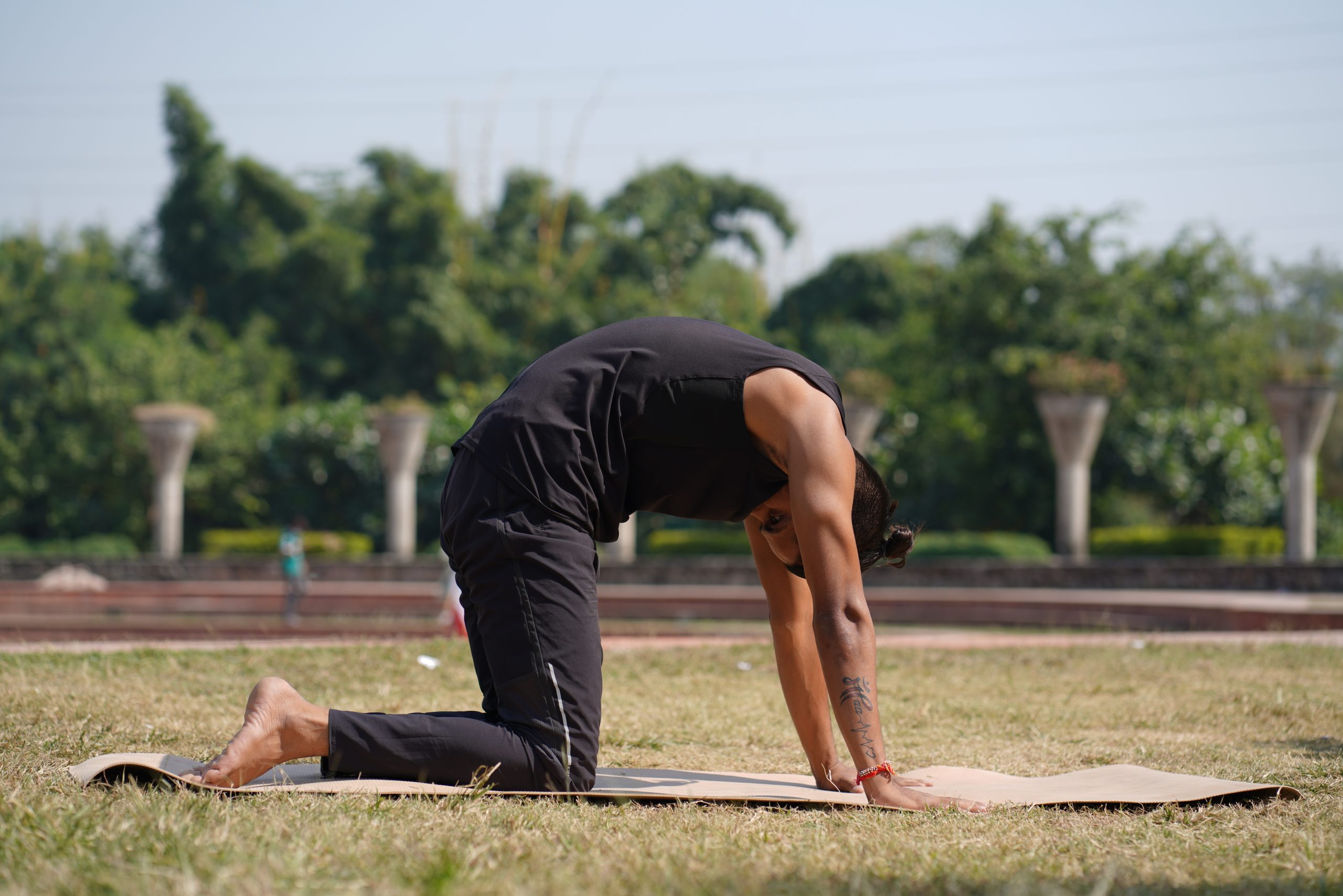
1. **Cat-Cow Stretch**This dynamic stretch is a fantastic way to gently warm up your spine, which often becomes stiff after hours of sleep. By moving through these two poses, you encourage spinal articulation, increasing flexibility and soothing that common morning stiffness that can affect your entire back. It’s a rhythmic, flowing movement that prepares your core and back muscles for the day ahead, making it a cornerstone of any morning routine.
To perform the Cat-Cow stretch, begin on your hands and knees, ensuring your wrists are directly under your shoulders and your knees are under your hips. As you inhale, arch your back, dropping your belly toward the floor, lifting your head and gaze upwards – this is the Cow pose. Feel the gentle extension through your front body. As you exhale, round your spine toward the ceiling, tucking your chin to your chest and drawing your navel towards your spine – this is the Cat pose. Focus on the release of tension in your upper back and neck.
Repeat this sequence slowly and mindfully for 5 to 8 rounds, synchronizing your breath with each movement. The intentional breathing not only enhances the physical benefits by encouraging deeper stretches but also calms your nervous system, contributing to that sense of peace before the day’s rush. This simple yet powerful stretch helps improve overall spinal health and can significantly reduce lower back discomfort.
By engaging your core throughout the movement, you’re not only stretching but also subtly strengthening the muscles that support your spine. This stretch is particularly effective for those who experience general back stiffness upon waking or spend a lot of time sitting, as it counteracts the compression that can build up in the vertebral discs. It’s a full-spectrum spinal massage that invigorates and mobilizes.
Read more about: Unlock Your Morning: Physical Therapists Reveal 12 Simple Stretches to Conquer Lower Back Pain for Good
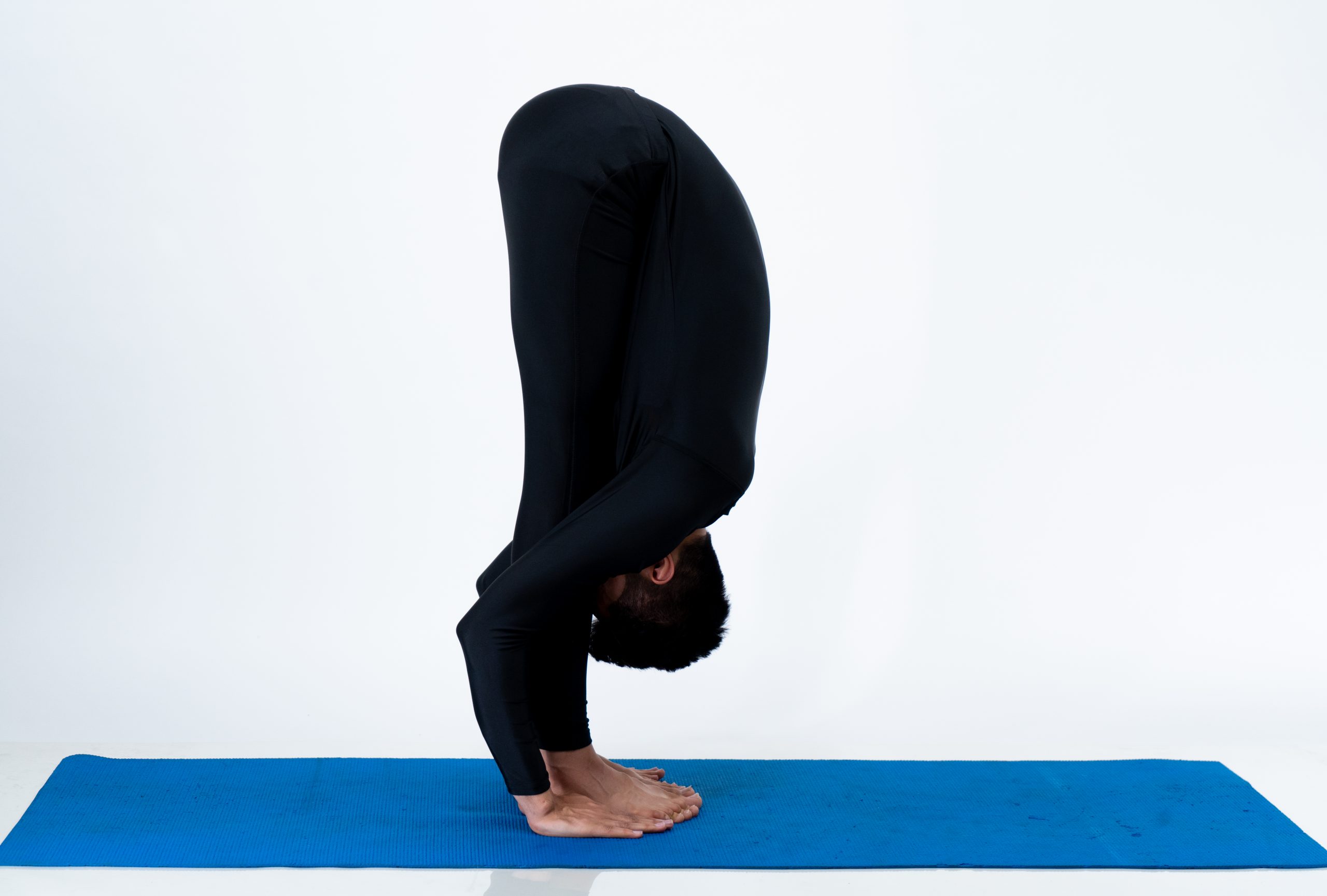
2. **Standing Forward Fold**This stretch is a classic for good reason, targeting tight hamstrings and the entire back line of the body. Hours of sleep can leave these areas constricted, and a gentle forward fold is an excellent way to release that tension. Beyond the physical benefits, the act of folding forward and relaxing your head below your heart can have a surprisingly calming effect on the nervous system, helping to alleviate any early morning stress.
To execute the Standing Forward Fold, begin by standing with your feet hip-width apart. Slowly hinge forward at your hips, allowing your upper body to fold down toward the floor. Keep your knees slightly bent to protect your hamstrings and lower back, especially if they are particularly tight. Let your arms hang freely toward the floor, or you can gently clasp opposite elbows.
Relax your head and neck completely, allowing gravity to gently decompress your spine. You should feel a deep stretch along the back of your legs and through your entire back. Hold this position for 20 to 30 seconds, breathing deeply into the stretch. As you exhale, you might find you can release a little further into the pose, deepening the stretch safely and effectively.
For those with limited mobility or seeking an alternative, a Seated Forward Fold offers similar benefits. Sit on the ground with both legs extended in front of you, feet flexed. Keeping your back flat and core engaged, hinge forward at your hips, reaching for your toes, ankles, or shins. This modification still delivers a profound hamstring and lower back stretch while providing additional stability.
This stretch is an excellent way to release residual tension from sleep that might be manifesting as stiffness in the lower back or hamstrings. It increases circulation to the brain due to the inversion, helping to clear mental fog and improve focus. The therapeutic effects of this gentle inversion can be profoundly refreshing, setting a serene and centered tone for your day.
Read more about: Unpacking the ‘Why’: Decoding Your Skyrocketing Homeowner’s Insurance Bill and Strategies to Bring it Back to Earth
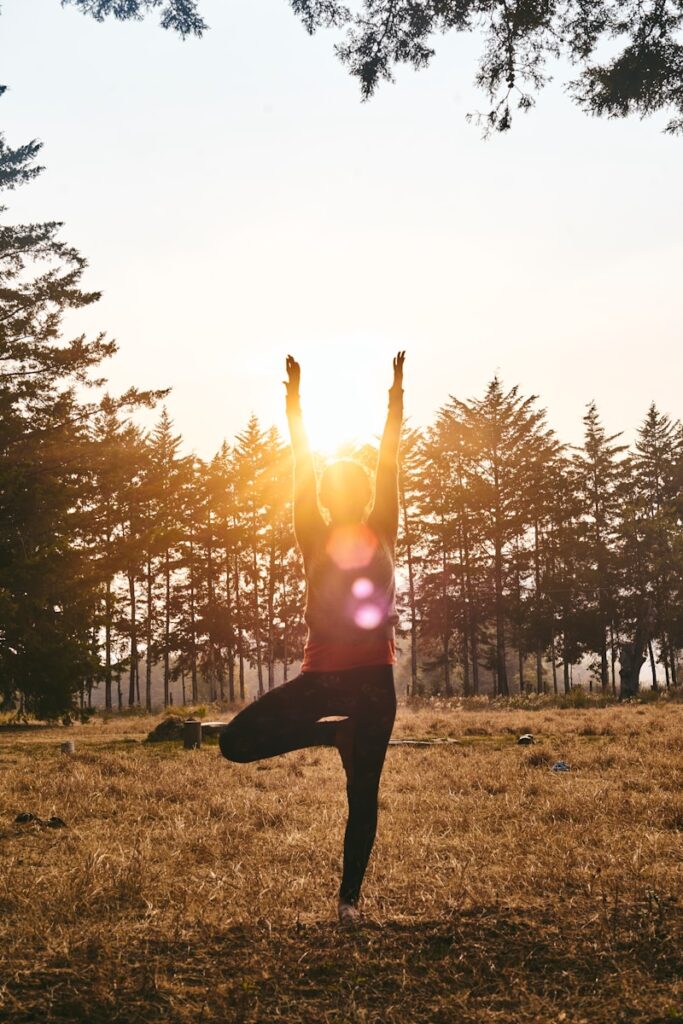
3. **Chest Opener (Standing with Interlaced Hands)**Many of us wake up with a tendency to hunch, a habit exacerbated by sleeping positions or common daily postures like looking at phones or sitting at desks. The Chest Opener stretch directly counteracts this, expanding the chest and lungs while drawing the shoulder blades together. This not only improves posture but also encourages deeper breathing, which in turn boosts energy levels and enhances your mood.
To perform this invigorating stretch, stand tall with your feet hip-width apart and your shoulders relaxed. Interlace your fingers behind your back. If interlacing is difficult, you can hold onto a towel or strap between your hands. Once your hands are clasped, straighten your arms as much as comfortably possible. As you do this, squeeze your shoulder blades together and gently pull your hands back and down, away from your body.
As you lift your chest towards the ceiling, you will feel a deep stretch across the front of your shoulders and chest. Ensure you keep your neck long and avoid craning your head back excessively. Hold this expansive position for 15 to 20 seconds, focusing on taking full, deep breaths that fill your expanded lung capacity. This mindful breathing amplifies the energizing effects of the stretch.
This stretch is particularly beneficial for relieving tension that accumulates in the chest and shoulders, often contributing to discomfort or a feeling of being ‘closed off’. By opening up the chest, you create more space for your heart and lungs, promoting better oxygen intake and reducing the likelihood of developing rounded shoulders. It’s a simple yet powerful way to literally open yourself up to the day.
Consistent practice of the Chest Opener can significantly improve your overall posture, helping you stand taller and more confidently. By regularly resetting your shoulder position and activating the muscles that support an upright stance, you can alleviate chronic aches in the upper back and neck that often stem from poor postural habits. It’s a key movement for maintaining an open, energized, and pain-free upper body.
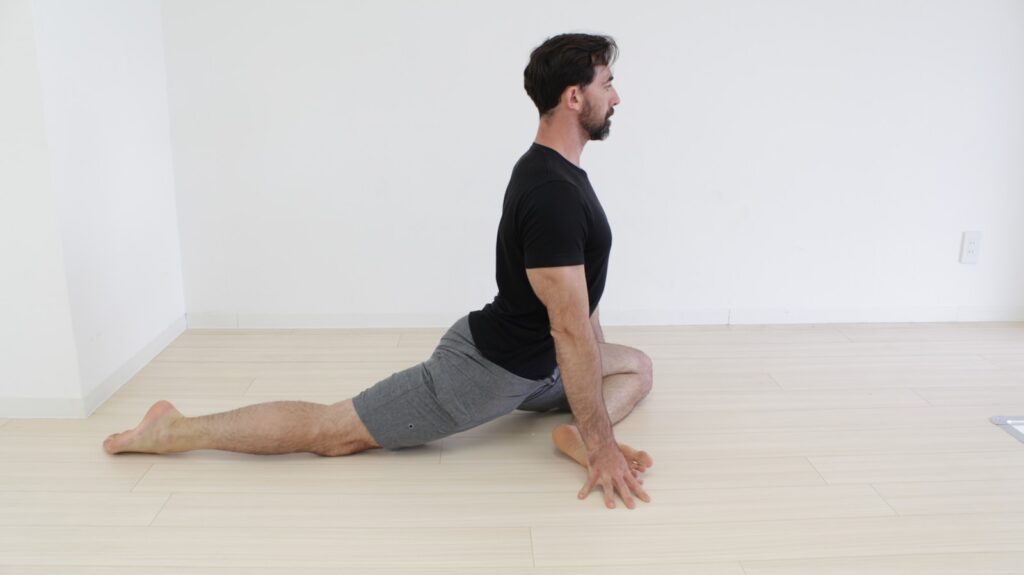
4. **Side Stretch (Standing with Arm Overhead)**Our side bodies are often neglected in daily movement, leading to stiffness and reduced flexibility in the ribs, obliques, and spine. This standing side stretch is an excellent way to gently elongate and open these areas, improving spinal mobility and overall flexibility. It helps you feel more open and awake, ready to twist and turn through the day’s activities without discomfort.
Start by standing tall with your feet hip-width apart and your hands by your sides. Engage your core gently to stabilize your torso. Reach your right hand overhead, extending your arm towards the ceiling. As you inhale, lengthen your spine. As you exhale, gently bend sideways to your left, allowing your left hand to slide down your leg as far as is comfortable.
Feel a deep, invigorating stretch along the entire right side of your torso, from your hip up through your armpit. Keep your chest open and avoid collapsing forward. Your gaze can remain forward or gently turn upwards, depending on what feels comfortable for your neck. Hold this position for 15 to 30 seconds, focusing your breath into the stretched side of your body.
Return to the starting position with control, then repeat the stretch on the opposite side, reaching your left arm overhead and bending to your right. Ensure that you maintain a sense of lengthening through your spine throughout the movement, rather than just crunching to the side. The goal is to create space between your ribs and gently decompress your spine laterally.
This stretch is highly effective for reducing stiffness in the intercostal muscles (between the ribs) and the obliques, which can contribute to a restricted feeling in the upper body. By improving breathing capacity and promoting better spinal articulation, it helps alleviate lateral back aches and contributes to a more fluid, graceful movement throughout your day. It’s a wonderful way to refresh your body and mind.
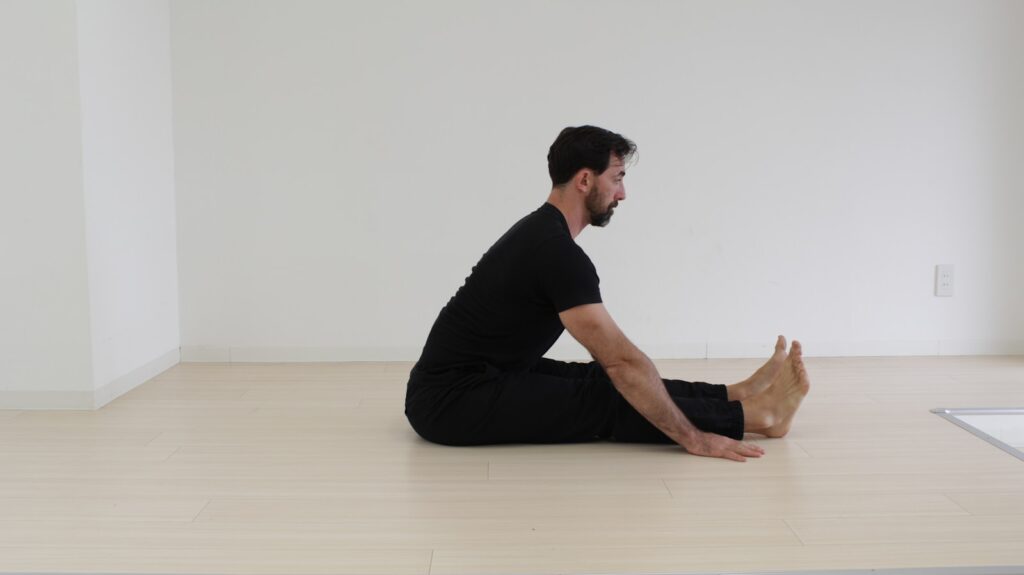
5. **Neck Rolls**Neck and shoulder tension are incredibly common morning complaints, often stemming from awkward sleeping positions, stress, or the cumulative effect of looking down at screens. Gentle neck rolls are a simple yet highly effective way to relieve this tension, improve blood flow to the brain, and enhance overall relaxation. This small movement can make a huge difference in how you carry yourself through the day.
To perform Neck Rolls, sit or stand comfortably with a tall spine and relaxed shoulders. Begin by gently dropping your chin to your chest, feeling a stretch in the back of your neck. Take a slow, deep breath here, allowing the weight of your head to deepen the stretch naturally. Avoid forcing the movement or pushing into any pain.
From this position, slowly roll your head to the right, bringing your right ear towards your right shoulder. Do not lift your shoulder to meet your ear; instead, allow your ear to move towards your shoulder. Then, gently roll your head back, allowing the crown of your head to point towards the ceiling, without letting your head drop all the way back if that causes discomfort.
Continue the slow roll to the left, bringing your left ear towards your left shoulder, and finally, bring your chin back to your chest. This completes one full rotation. Repeat this gentle, controlled movement 3 to 4 times in each direction, ensuring each roll is deliberate and pain-free. The slower you go, the more you’ll feel the release.
This specific stretch is excellent for releasing muscle knots and tightness in the cervical spine and surrounding shoulder muscles. By increasing circulation to the neck and head, it can help reduce morning headaches and improve mental clarity, preparing you for tasks that require focus. It’s a quick and accessible form of self-care that can prevent tension from building up throughout your day.
Read more about: Buyer Beware: 15 Sedans That Become Money Pits vs. Those That Hold Their Value After Five Years

6. **Upper Back Stretch**The upper back is another common area for stiffness, particularly for those who spend a lot of time hunched over. This targeted stretch is designed to provide deep relief in the upper back, opening up the space between your shoulder blades and counteracting the forward rounding that can occur during sleep or prolonged sitting. It’s a straightforward way to release tension and improve posture.
To perform the Upper Back Stretch, begin by standing tall with your feet hip-width apart. Interlace your fingers together in front of your body, palms facing inwards. Then, extend your arms straight out in front of you, turning your palms outwards so they face away from your body. As you push your palms away, simultaneously lower your head and gently round your shoulders forward.
As you round your shoulders, imagine you are trying to push the space between your shoulder blades towards the ceiling. You should feel a deep, satisfying stretch across your upper back and between your shoulder blades. Avoid any jerky movements; the stretch should be smooth and controlled. Keep your core gently engaged to support your spine throughout the movement.
Hold this position for 15 to 30 seconds, breathing deeply into the stretched area. Allow your breath to help you release any lingering tension. As you exhale, you might find that you can deepen the rounding slightly, enhancing the stretch. After holding, slowly release your arms and return to an upright standing position.
This particular stretch is invaluable for addressing the stiffness and discomfort often felt between the shoulder blades, which can result from sleeping in a slouched position or from poor posture throughout the day. By actively rounding the upper back and creating space, you help to decompress the thoracic spine and lengthen tight muscles. This leads to less stiffness and greater ease of movement, improving your ability to perform daily tasks without pain.
Read more about: From Budding Beginnings to Bright Futures: 14 Core Childhood Realities That Pave the Way to Adulthood
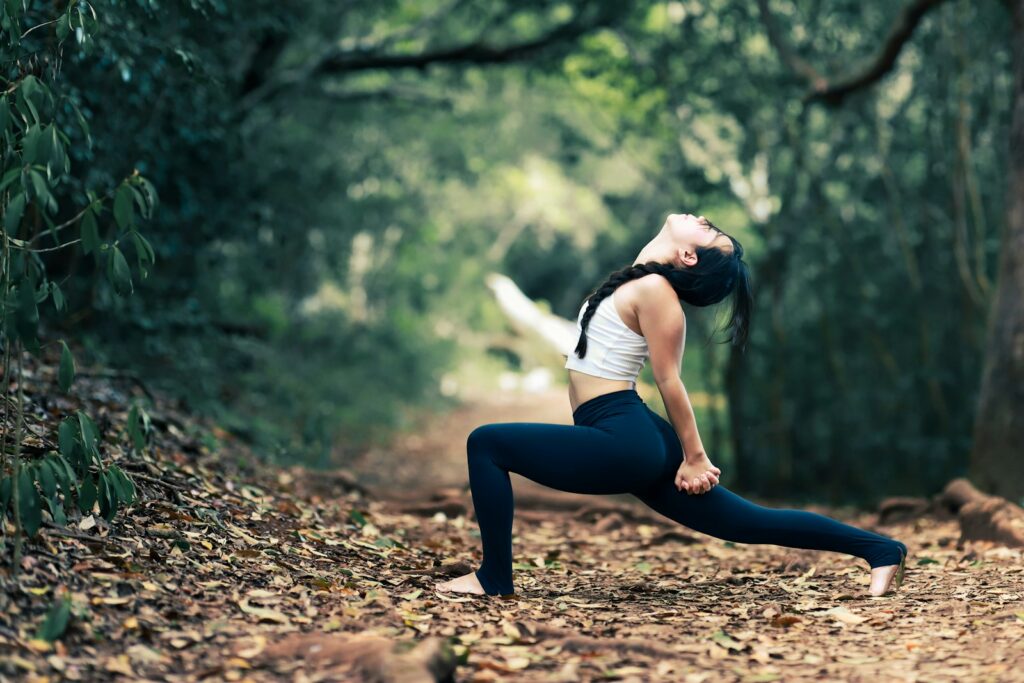
7. **Overhead Triceps Stretch**While often associated with arm workouts, the triceps also play a role in shoulder mobility, and tension in this area can restrict arm movement and contribute to shoulder stiffness. This overhead stretch effectively targets the triceps, along with opening up the sides of your shoulders and lats. It’s a great way to ensure full range of motion in your arms and shoulders, which is essential for many daily activities.
To begin the Overhead Triceps Stretch, stand tall with your feet hip-width apart. Extend your right arm directly overhead, reaching towards the ceiling. Then, bend your right elbow, bringing your right palm to rest between your shoulder blades. Your fingertips should be pointing down your back. Ensure your elbow is pointing directly upwards towards the ceiling.
With your left hand, gently grab your right elbow. Slowly and gently pull your right elbow to the left, further deepening the bend in your arm and guiding your right hand further down your back. You should feel a significant stretch along the back of your right upper arm, in the triceps muscle, and potentially down the side of your torso. Remember to keep your shoulders relaxed, not shrugged.
Hold this stretch for 15 to 30 seconds, maintaining steady, deep breaths. This controlled breathing helps to relax the muscles and allows for a more effective stretch. Avoid pulling too aggressively; the goal is a gentle elongation, not pain. After the hold, slowly release your left hand and lower your right arm.
Switch sides and repeat the process for your left arm, extending it overhead, bending the elbow to bring the palm between your shoulder blades, and then gently pulling the left elbow with your right hand. This ensures that both sides of your body receive equal attention, preventing imbalances.
This stretch is excellent for improving the flexibility of the triceps and increasing the range of motion in your shoulder joints, which can often feel tight and restricted in the morning. By loosening these muscles, you reduce the likelihood of stiffness and discomfort when reaching overhead or performing daily tasks. It’s a key movement for maintaining fluid, pain-free upper body movement and ensuring your arms and shoulders are ready for anything the day brings.
The previous section laid the groundwork, introducing the immense benefits of a morning stretch routine and guiding you through seven foundational movements to awaken your spine and upper body. Now, we delve deeper into specific stretches that continue this journey of revitalization, turning our attention to the lower body, enhancing hip flexibility, and incorporating comprehensive full-body movements. These next seven stretches are designed to further release tension, improve your range of motion, and prepare every part of you for an active and comfortable day.
Read more about: Beyond the Hype: Fitness Trainers Reveal the Secrets to Mark Wahlberg’s Redefined 2025 Workout Schedule
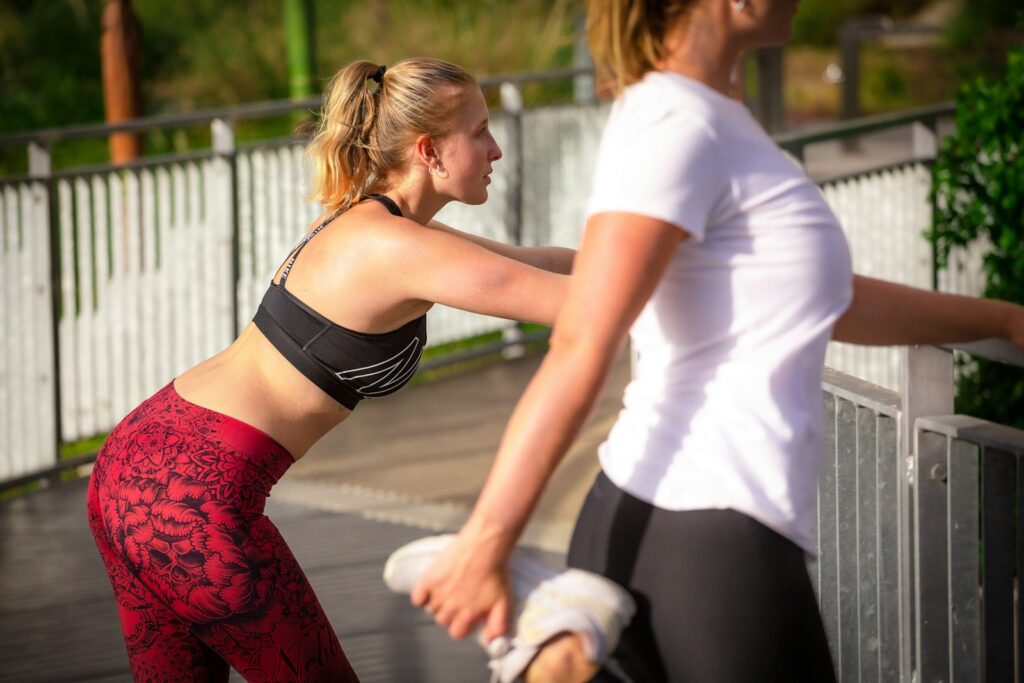
8. **Back Bend**The Back Bend beautifully extends the front of your torso, counteracting hours spent curled during sleep. This stretch gently mobilizes the spine, releasing tension in abdominals, hip flexors, chest, and shoulders, promoting spinal health and alleviating disc compression.
To perform, stand with feet hip-width apart for stability. Reach both arms overhead, interlocking hands. Gently shift your gaze upwards, initiating the bend.
Carefully arch your back, hips shifting slightly forward. Keep your neck neutral, avoiding strain. Extend only as far back as comfortable, without dumping weight into your lower back. Focus on a controlled, supported arch.
Engage core and glutes to lift chest back upright. Complete 5 to 10 repetitions, allowing gentle lengthening. For support, a stability ball between your back and a wall can assist.
Read more about: Brad Pitt’s Epic Journey: 8 Defining ‘Vehicles’ That Drive His Discerning Style
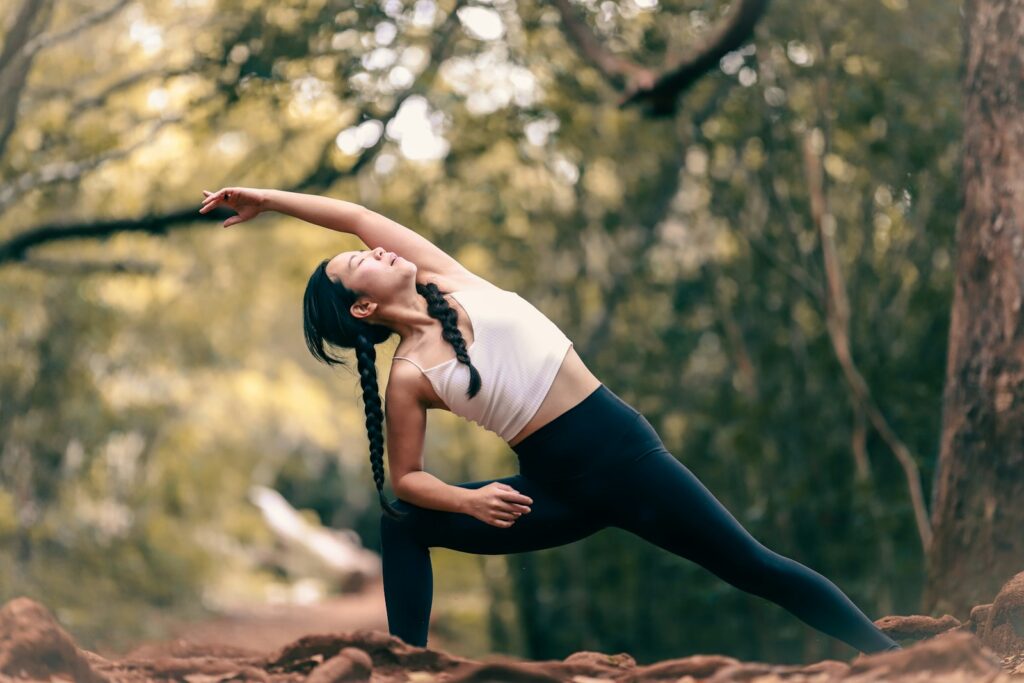
9. **Walk Out to the World’s Greatest Stretch**This powerful, multifaceted stretch dynamically targets areas often tight from sleep. It lengthens hip flexors, hamstrings, and calves, while twisting the thoracic spine. This full-body movement improves flexibility and coordination.
To begin, stand tall, feet hip-width apart. Hinge forward at hips, folding upper body down until hands reach floor. Keeping core engaged, walk hands forward into a high plank position, body forming a straight line.
In plank, bring right foot to outside of right hand. Twist torso towards right foot, lifting right hand high overhead. Hold for one deep breath, then lower arm and untwist. Return right foot to meet left, back to high plank.
Repeat on opposite side. After both sides, walk hands back to feet, keeping legs straight. Stand up. Complete 5 repetitions. If wrists are sensitive, drop to forearms for support.
Read more about: From Street Takeovers to Uninsured Nightmares: The Wildest Automotive Hits You Won’t Believe
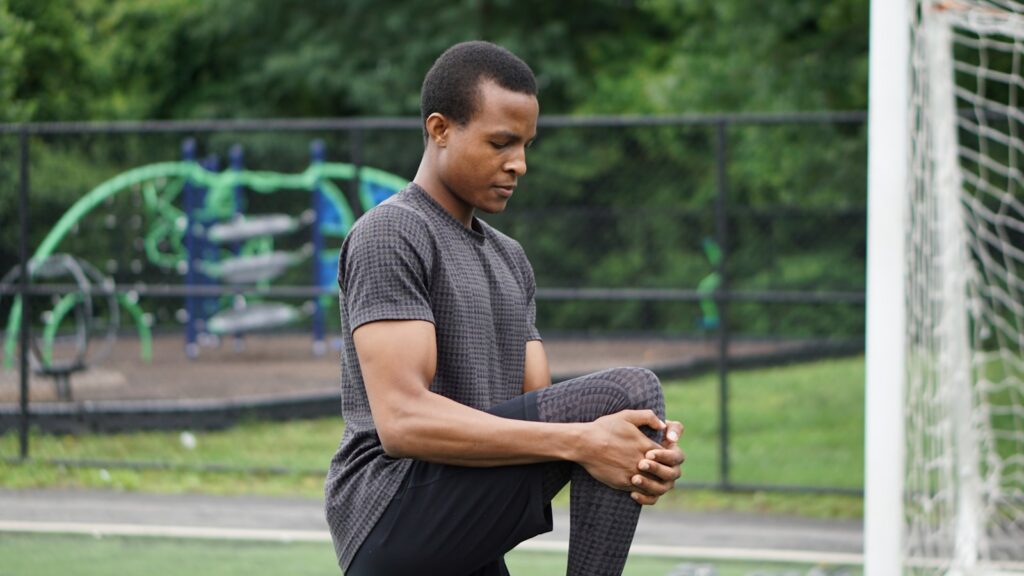
10. **Adduction Rock Backs**Adduction Rock Backs improve hip mobility and alleviate tension in inner thigh muscles. Adductors tighten from sitting, contributing to hip and groin stiffness. This gentle rocking lengthens these muscles, promoting greater lower body flexibility.
To begin, kneel on all fours, weight evenly distributed. Extend one leg directly to your side, in line with your hip. Foot can be flat or resting on its side.
With leg extended, gently rock backward, pressing hips back and down towards your heel. Feel a gentle, elongating sensation through the inner thigh, not sharp pain. Hold for one full breath to relax muscles.
Then, press hips forward, returning to neutral. Repeat this motion for 10 repetitions per side. For knee sensitivity, place a mat or blanket beneath your kneeling knee for cushioning.
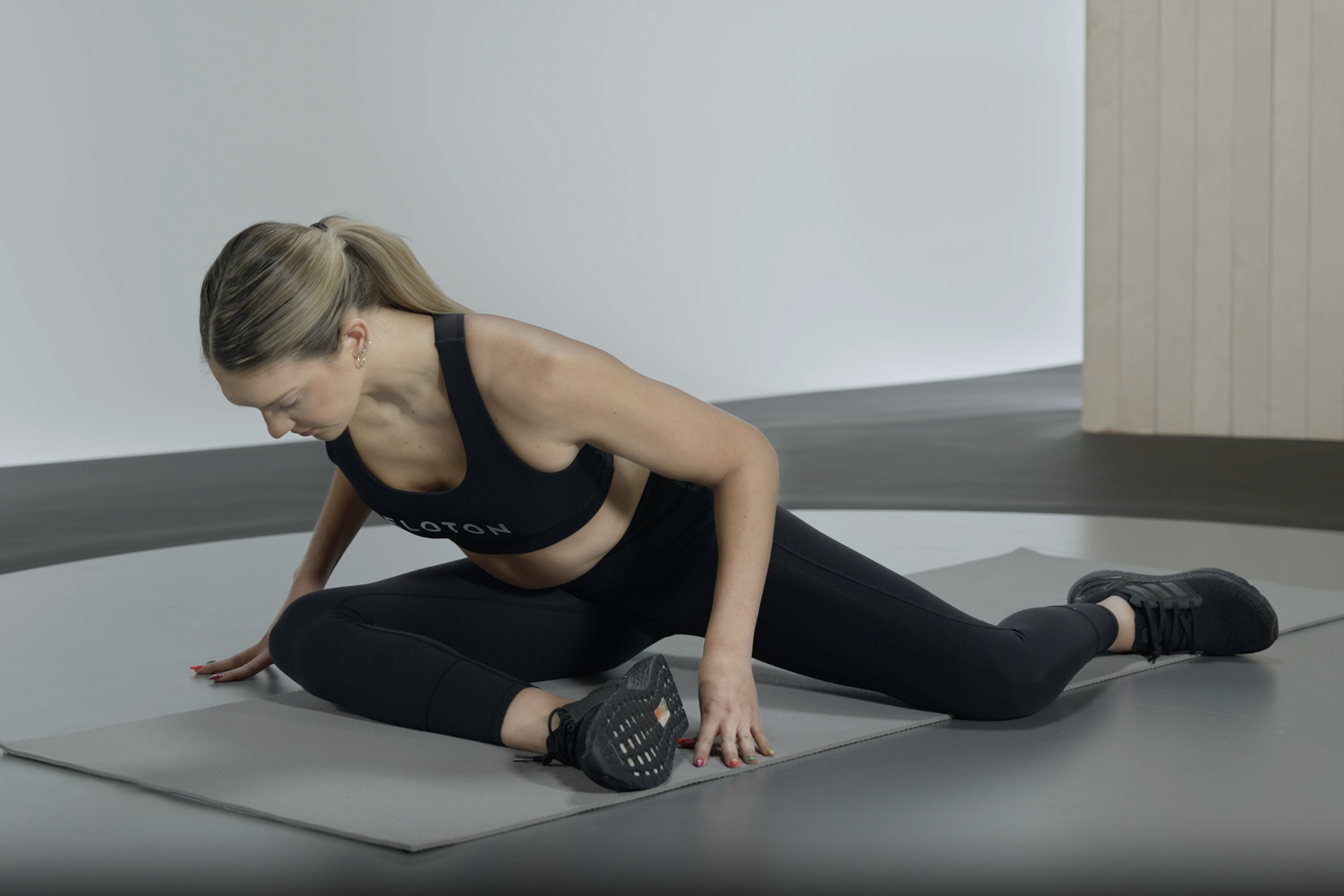
11. **90-90 Stretch**Hips and glutes are major tension reservoirs after sleep. The 90-90 stretch is a superb hip opener, targeting piriformis. It improves hip external rotation and lower body comfort for fluid daily movements.
To begin, sit comfortably. Position right leg in front, knee bent at 90 degrees, shin parallel. Flex right foot. Bend left leg behind at 90 degrees, keeping left foot flexed.
This initial setup might already provide sufficient stretch. If so, simply hold. For greater flexibility, gently lean torso forward, hinging from hips, to intensify the stretch.
Maintain for 30 seconds, using deep breaths. Slowly release and return upright. Switch leg positions and repeat. For limited mobility, place a yoga block or cushion beneath your front knee for support.
Read more about: Navigating Your Golden Years: A Comprehensive Guide to the Pros and Cons of Early Retirement vs. Working Longer
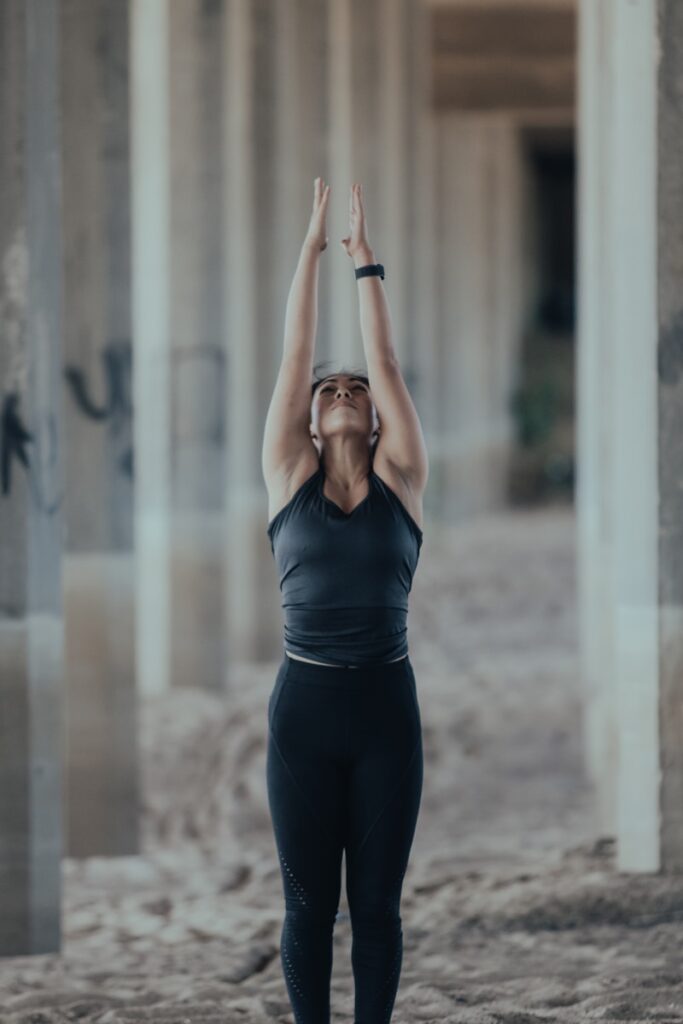
12. **Seated Toe Touch to Lateral Bend**This unique stretch combines hamstring, oblique, and lateral spinal extension, opening the side body and posterior chain. It effectively releases tension along hamstrings and latissimus dorsi. Reaching for toes and extending overhead revitalizes torso and legs.
To perform, sit comfortably. Extend one leg straight out, foot flexed. Bend your other knee, its sole touching the inner thigh of your extended leg. This creates a stable base and opens one hip.
Sit tall, elongating your spine. Reach out with the hand corresponding to your extended leg to gently touch shin or toes. Simultaneously, reach your opposite arm overhead, arcing it towards your extended leg. As you bend, lift and open your chest towards the ceiling for profound lengthening.
Hold for 30 seconds, focusing on breath to deepen release. Slowly return to seated. Switch legs and arms, then repeat. For limited hamstring mobility, a slight bend in your extended knee is a simple modification.
Read more about: Mastering Midlife Fitness: The Essential Exercises Men Over 50 Need to Stay Strong, Mobile, and Injury-Free
13. **Figure 4 Stretch**The Figure 4 Stretch effectively unlocks tension in hips, glutes, and the piriformis muscle. These areas are prone to tightness, causing discomfort or radiating pain. Gently bringing your knee towards your chest provides significant release, promoting greater flexibility and comfort in your lower back and hips.
To begin, lie comfortably on your back with legs extended. Ensure your spine is neutral. Cross your left ankle over your right quadricep, just above your right knee. Keep your left foot flexed to protect the knee joint.
Next, bend your right knee, bringing your right foot closer toward your hips. This might already provide sufficient stretch; if so, hold. For a deeper stretch, interlace fingers behind your right thigh and gently pull your right knee in.
Hold for 30 seconds, using deep breaths. Slowly release hands and uncross legs. Switch sides, repeating the sequence with your right ankle over your left quad. To deepen further, shift legs slightly opposite the stretching glute.
Read more about: Trouble on the Update: 13 Smartwatches Users Wish They Never Synced to Their Phone.
14. **Knee Hug to Twist**The Knee Hug to Twist offers a deeply satisfying release for the lower back, obliques, and thoracic spine. This two-part movement excels at decompressing the spine and enhancing rotational mobility, vital for everyday activities. It’s a gentle way to wring out residual tension, preparing your core and back for the day.
To perform, lie flat on your back, body relaxed, legs extended. Center yourself. Bend your right knee, gently hugging it towards your chest, feeling compression and lower back lengthening.
Slightly release your bent leg. With your left hand, guide your right knee across your body towards the opposite side (left). Keep shoulders and upper back glued to the ground, ensuring the twist originates from your spine. Extend your right arm out to the side to deepen the stretch and stabilize. Feel a significant, comfortable twist through lower back and obliques.
Hold this gentle twist for 30 seconds, using deep breaths. Slowly untwist, bringing your right knee back to your chest, then extending your leg. Switch sides, repeating the sequence. Only extend as far as comfortable, respecting your body’s mobility.
**Making Morning Stretches a Daily Habit for Lasting Health**
As we’ve explored these 14 simple yet transformative stretches, it’s clear that integrating a morning routine can profoundly enhance your physical and mental well-being. From gently waking your spine to opening your hips and activating your entire body, these movements are designed to melt away stiffness, boost your energy, and set a positive tone for the entire day.
The true power lies not in the intensity of each stretch, but in the consistency of your practice. Brittany Watts, a NASM-certified personal trainer, emphasizes that ‘Stretching in the morning offers several benefits that can positively impact your day.’ By committing to even a few minutes each morning, you’re investing in a future with greater flexibility, reduced aches, and a more energized, focused self.
Read more about: Oops! 14 Times Fashion Week & Red Carpet Moments Had Stars (and Royals!) Totally Mortified by Wardrobe Wonders Gone Wild
Remember, listening to your body, breathing mindfully, and starting slowly are key to making this a sustainable and enjoyable habit. Embrace the calm, embrace the movement, and unlock a truly refreshed start to every single day.


